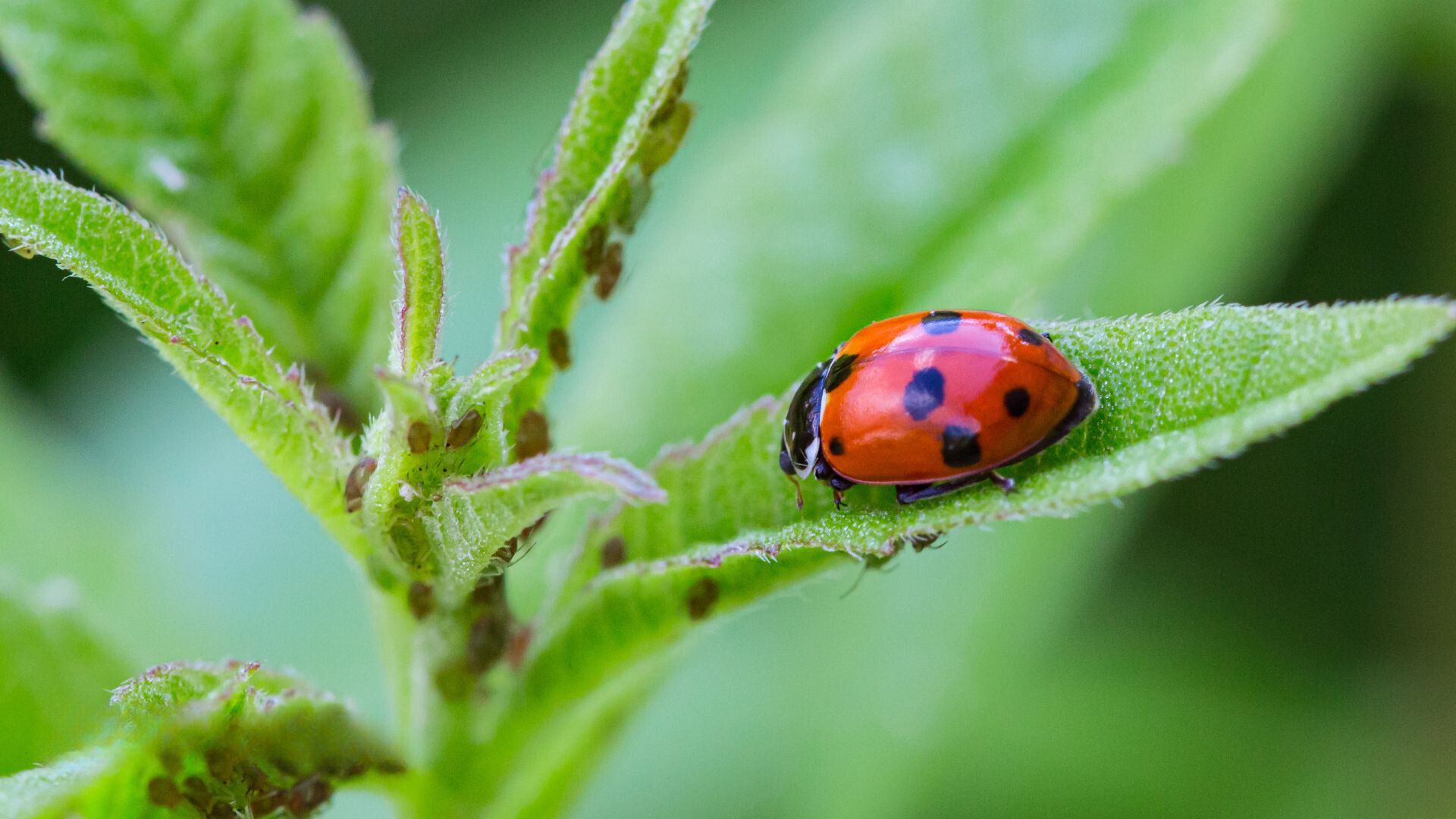Aphid’s challenge
Aphids, known scientifically as Aphidoidea, are notorious for their ability to reproduce rapidly, colonize plants, and feed on their sap. These tiny pests, often found in large numbers, can induce devastation to plants, causing plant stunting growth, necrotic spots on leaves, and even yield losses. Gardeners frequently resort to various pest control methods to control aphid invasions, including chemical insecticides.
Ladybug, Nature’s Pest Control
Among the various natural predators that help to keep aphid populations in check, ladybugs emerge as some of the most effective. These vibrant insects, members of the Coccinellidae family, hold a big appetite for aphids. A single ladybug can consume hundreds of aphids in a day, making them a valuable helper in the garden.
But what motivates ladybugs to be such effective aphid hunters?
It turns out that ladybugs are not just seeking a gourmet meal; they are also attracted to the existence of aphids by the scent of pheromones that aphids release when they are under attack. As aphid populations grow, so does the concentration of pheromones, which acts as a sign for ladybugs to locate abundant food sources.
In addition, ladybugs’ behavior includes a phenomenon called “mass recruitment.” During this phenomenon, ladybugs emit chemical signals that attract other ladybugs to locations where aphids have invaded.

Beneficial Effects on Gardens
The delicate balance between aphids and ladybugs benefits gardens in multiple ways. Firstly, ladybugs help prevent aphids from overpopulating and causing significant damage to plants. Their predatory activity helps maintain the health and vitality of garden ecosystems.
Secondly, the presence of ladybugs in the garden can also have indirect positive effects. Studies have shown that the presence of ladybugs, even without actively feeding on aphids, can prevent aphid colonies from forming or delay their reproduction. This phenomenon, known as the “ladybug effect,” demonstrates the profound influence of ladybugs on aphid behavior.
Creating a Ladybug-Friendly Environment
To encourage ladybugs to establish a sustainable presence in your garden, it is essential to create an environment that supports their needs. Ladybugs require sources of food, water, and shelter to thrive. Consider planting a diverse range of flowering plants, such as daisies, marigolds, and cosmos, which provide nectar and pollen as food sources for adult ladybugs. Furthermore, when the natural enemy of Aphids “Ladybugs” increase and gain control of aphid populations, avoid using broad-spectrum pesticides to conserve this natural alliance.

